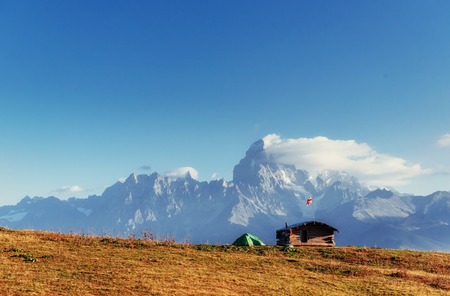Understanding Tent Season Ratings
If you’ve ever browsed for a new tent, you’ve probably noticed labels like “3-season” or “4-season” stamped on the packaging. But what do these seasonal ratings actually mean, and how do they impact your camping experience? In the world of outdoor gear, season ratings serve as a quick shorthand for the kind of weather and conditions a tent is built to handle. A 1-season tent typically offers basic protection—think backyard sleepovers or warm summer nights. A 2-season tent handles mild spring and summer rain but isn’t cut out for heavy storms. The most popular option, the 3-season tent, strikes a balance: it’s designed to stand up to moderate wind, rain, and even light snowfall, making it versatile for spring, summer, and fall adventures across the U.S. Meanwhile, 4-season tents are engineered for winter use, with sturdier materials and structures that can withstand heavy snow loads and fierce mountain winds. Understanding these ratings helps you match your shelter to your planned environment—whether you’re chasing desert sun, braving Appalachian thunderstorms, or snow camping in the Rockies. By decoding season ratings, you can confidently choose a tent that keeps you comfortable, safe, and ready for whatever Mother Nature throws your way.
Spring Camping: Finding the Perfect Balance
Spring is a time of renewal—and unpredictability. When it comes to camping, that means you need a tent that can handle sudden rain, chilly nights, and surprise heat waves. Picking the right shelter is all about striking a balance between staying dry, comfortable, and well-ventilated. Here’s what to look for when choosing a tent for spring adventures across the U.S.
Key Features for Spring Weather
| Feature | Why It Matters | What to Look For |
|---|---|---|
| Ventilation | Reduces condensation and keeps air fresh during humid or warm spells. | Mesh panels, multiple windows, and adjustable vents. |
| Waterproofing | Keeps you dry during sudden spring showers or storms. | Taped seams, high-quality rainfly, and bathtub-style floor design. |
| Weather Resistance | Withstands wind and fluctuating temperatures common in spring. | Durable poles (aluminum or fiberglass) and secure guy lines. |
| Packed Size & Weight | Makes spontaneous trips easier; spring trails can be muddy or tricky. | Lightweight materials and compact storage bag. |
Pro Tip: Don’t Skimp on the Rainfly
A full-coverage rainfly is a non-negotiable for spring camping in places like the Pacific Northwest or Appalachia. Look for one that extends close to the ground without blocking airflow—it’ll protect against sideways rain but still allow ventilation.
American Camping Reality Check
If you’re headed to a national park or setting up near lakes in the Midwest, expect anything from morning frost to afternoon thunderstorms. Always check local weather patterns before your trip and choose a tent that offers flexibility. In short: prepare for “a little bit of everything.” The right tent will let you enjoy blooming wildflowers and crisp mornings—without waking up soggy or stuffy.

3. Summer Shelters: Staying Cool and Bug-Free
Summer camping can be a dream—long days, warm nights, and beautiful clear skies. But with the heat and humidity comes the challenge of staying comfortable and avoiding relentless bugs like mosquitoes. Here are some practical tips for choosing the right tent that will keep you cool and bite-free during those hot American summer nights.
Prioritize Ventilation
Look for tents specifically designed with maximum airflow in mind. Mesh paneling is key—opt for double-wall tents with large mesh windows, doors, and even ceilings. This allows for cross-ventilation, letting cooler air in while pushing out hot, stale air. Some summer-specific shelters even have full mesh bodies, which are ideal if you’re camping in areas with minimal rainfall.
Consider a Rainfly You Can Adjust
A rainfly is essential for unexpected showers, but during dry spells, you’ll want the option to roll it back or remove it entirely. Choose a tent with a rainfly that’s easy to adjust or partially deploy so you can expose more mesh when the weather allows, maximizing breathability without sacrificing protection if clouds roll in.
Think About Tent Size and Shape
Bigger isn’t always better when it comes to warmth, but in the summer, a roomier tent means more air circulation. Dome and cabin-style tents often have higher ceilings and vertical walls, promoting better airflow than smaller, low-profile designs.
Mosquito Defense: Go Full Mesh
Nothing ruins a night faster than swatting away mosquitoes. In regions like the Midwest or South where bugs are notorious, choose tents with no-see-um mesh—a finer weave that keeps out even the smallest pests. Double-check that all zippers close tightly and there are no gaps along seams or at the base of the tent where bugs could sneak in.
Bonus Tip: Location Matters
Even the best ventilated tent can get stuffy if pitched in direct sun all day. Set up your shelter under natural shade when possible and avoid pitching near standing water—prime mosquito territory. A simple tarp overhead can also provide extra shade and help keep your tent cool.
By focusing on these features, you’ll set yourself up for breezy, comfortable nights and peaceful sleep—even when the temperatures climb and the bugs come out to play.
4. Fall Adventures: Weathering the Transition
As summer fades and the leaves begin to turn, fall camping offers a unique blend of crisp air, changing scenery, and unpredictable weather. Picking the right tent for autumn adventures is all about preparing for cooler temperatures, gusty winds, and those sudden rain showers that define the season. Unlike summer tents, your fall shelter needs to provide better insulation and stability while still allowing some ventilation to prevent condensation.
Key Features for Fall Tents
When choosing a tent for fall, look for materials that balance warmth and breathability. A double-wall construction helps trap heat and reduce internal moisture. Full-coverage rainflies are essential—they protect against wind-driven rain and help retain warmth on chilly nights. Sturdy poles (think aluminum or heavy-duty fiberglass) provide extra support during windy conditions. Don’t forget about vestibules or gear lofts; they’re handy for keeping wet gear outside your sleeping area.
Comparing Tent Types for Fall Camping
| Tent Type | Best For | Fall-Ready Features |
|---|---|---|
| Three-Season Tent | Mild to moderate fall weather | Good ventilation, full rainfly, moderate insulation |
| Convertible Tent | Unpredictable conditions | Extra pole sleeves, zippered vents, strong fabrics |
| Four-Season Tent | Early snow or high elevations | Superior insulation, reinforced frames, minimal mesh panels |
Packing Tips for Autumn Comfort
If you’re heading out in the fall, bring an extra ground tarp to keep moisture at bay and consider packing a heavier sleeping bag rated for lower temps than you expect. Layer your clothing and remember that even if the days are sunny, nighttime can get surprisingly cold. Finally, always check local weather forecasts—fall storms can pop up fast, so it’s smart to practice setting up your tent quickly before you head out.
5. Winter-Ready Tents: Surviving the Cold
What Makes a True Four-Season Tent?
If you’re camping in the depths of winter, a regular tent just won’t cut it. Four-season tents are engineered for snow, harsh winds, and frigid temperatures. Look for robust pole structures (often aluminum), steep walls to shed snow, and tough, full-coverage rainflies. Ventilation is still key—condensation can quickly become your enemy if the tent is too sealed up. Double-wall construction helps manage moisture and keeps warmth inside.
Key Features to Prioritize
- Sturdy Frame: A winter tent needs to stand up to heavy snow loads and gusty winds. Test out pole strength and connection points.
- Snow Flaps & Vestibules: Snow skirts around the base block drifts from blowing in, while vestibules give you a sheltered area to remove snowy boots or cook with a stove.
- Ample Guy-Out Points: Extra tie-down points help anchor your shelter when the wind picks up.
Smart Strategies for Winter Camping Comfort
- Insulate Underneath: Always use an insulated sleeping pad—cold ground will sap heat fast, no matter how good your sleeping bag is.
- Ventilate Wisely: Crack open vents or doors slightly at night to reduce condensation build-up without letting in drafts.
- Layer Up: Dress in layers and bring dry clothes for sleeping; damp gear equals cold nights.
Safety Tips: Prepare for Anything
- Always check weather forecasts before heading out, but prepare for sudden changes anyway.
- Packing a small emergency bivy or thermal blanket adds peace of mind if things go sideways.
The Bottom Line
A four-season tent is more than just extra fabric—it’s your lifeline in extreme conditions. Invest thoughtfully, practice setting it up before you go, and pair it with solid winter camping habits for the safest, coziest cold-weather experience possible.
6. Bonus Tips: Maintenance, Storage, and Longevity
Investing in a great tent is only half the battle; keeping it in top shape ensures you’re always prepared for spontaneous camping trips or that big seasonal adventure. Here are some practical tips to help your tent last season after season—rain, shine, or snow.
Clean After Every Trip
No matter if you’re returning from a summer festival or a winter backpacking trek, always shake out dirt, leaves, and debris before packing up. Use a soft brush or sponge with mild soap and cold water to spot-clean stubborn stains. Avoid harsh detergents—they can damage waterproof coatings common on American tents.
Dry Completely Before Storing
Mold and mildew are a camper’s worst enemy. Set up your tent at home or hang it over a clothesline to dry thoroughly, especially after rainy spring or fall trips. Even in dry climates like Arizona, condensation can sneak up on you.
Store Smart
Skip the tight stuff sack for long-term storage. Instead, loosely roll or fold your tent and keep it in a breathable cotton bag in a cool, dry closet or garage shelf. This prevents fabric breakdown—a crucial tip for those who camp all four seasons across the U.S.
Inspect and Repair Regularly
Before each outing—whether you’re chasing autumn foliage in Vermont or summer stars in Colorado—inspect seams, zippers, poles, and stakes. Small rips? Patch them with repair tape right away. Many outdoor retailers sell patch kits tailored for popular U.S. brands like REI and Coleman.
Reapply Waterproof Coatings
If rainwater starts to seep through or the tent fabric looks faded, refresh the DWR (Durable Water Repellent) coating. Products like Nikwax are available at most American outdoor stores and extend your shelter’s life through unpredictable weather swings.
Your Tent: Ready for Any Season
Treat your tent as an essential partner for every adventure—from muggy southern springs to icy northern winters—and it’ll reward you with comfort and reliability year after year. A little TLC goes a long way toward making every season outdoors memorable.


